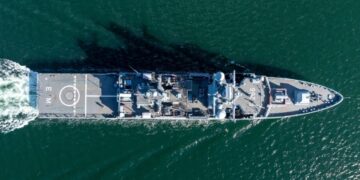Joachim Weber (ed.): Arctic conflict zone. The great powers and the High NorthMiles Verlag, 19.80 euros, ISBN 978-3-96776-023-1
This book is dedicated to great power conflicts in the Arctic. Joachim Weber is by no means a stranger to German-language Arctic and maritime policy studies, having edited an English-language handbook on geopolitics in the High North at the Institute for Security Policy Kiel (ISPK) between 2017 and 2020. His swiftly published second work is shorter, more concise and altogether more manageable - and should find a broad readership, not least for this reason. The editor, who is also responsible for four of the seven chapters, begins with an introduction to the conflict dynamics in the Arctic region. In addition to the special focus on China (Johannes Mohr), the USA and Russia, the book also deals with the European Union (Andreas Raspotnik). In addition, the Norwegian Rasmus Bertelsen takes a 500-year historical look at the Arctic from a maritime geostrategic perspective in the only essay in English.
Since the possibility of Bündnis90/Die Grünen participating in the new German government is realistic, this volume is urgently recommended to all those who want to and are able to think together the policy fields of security policy, climate change and geopolitics with a polar focus. The Arctic may soon become a foreign policy field of action for a Green coalition government. Germany still sees the far north mainly through the lens of climate change, almost as if the Berlin Republic, navy, marine researchers and maritime traders could remain neutral in the global great power competition. In any case, Weber deserves special thanks for pointing out cross-connections and fields of action.
Text: Sebastian Bruns












0 Kommentare